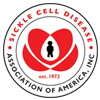Trusted Resources: Evidence & Education
Scientific literature and patient education texts
Mistrust of Pediatric Sickle Cell Disease Clinical Trials Research
source: American Journal of Preventive Medicine
year: 2016
authors: Stevens EM, Patterson CA, Li YB, Smith-Whitley K, Barakat LP
summary/abstract:INTRODUCTION:
Sickle cell disease (SCD) research is hampered by disparities in participation due in part to mistrust of research among racial/ethnic minorities. Beyond the historic context of research misconduct, little is known about the associations of social ecologic factors with mistrust and of mistrust with SCD clinical trials enrollment. This study evaluated proximal (age, gender, disease severity, perceived stress, SES) and distal (religious beliefs, social support, instrumental support) factors related to mistrust of research among caregivers of children with SCD and adolescents and young adults (AYAs) with SCD.
METHODS:
Over an 18-month period (2009-2010), participants completed questionnaires of perceived barriers and benefits to clinical trials enrollment, perceived stress, and self-reported demographic and disease-related information. Analyses (January-June 2015) used multivariable linear regressions to evaluate predictors of mistrust.
RESULTS:
Data were analyzed for 154 caregivers (mean age, 38.75 years; SD=9.56 years; 90.30% female) and 88 AYAs (mean age, 24.76 years; SD=7.25 years; 46.40% female). Among caregivers (full model, R(2)=0.14, p≤0.001), greater mistrust was explained by higher perceived stress (β=0.04, p=0.052); religious beliefs (β=0.61, p≤0.001); and greater instrumental support (β=0.07, p=0.044). Among AYAs (full model, R(2)=0.18, p≤0.001), higher mistrust was explained by being male (β=-0.56, p≤0.001) and lower instrumental support (β=-0.11, p=0.016). Mistrust was significantly greater among caregivers that reported no prior involvement in medical research (p=0.003).
CONCLUSIONS:
By understanding the complexity through which social ecologic factors contribute to mistrust, researchers may create targeted strategies to address mistrust and increase engagement in SCD research for caregivers and AYAs.
DOI: 10.1016/j.amepre.2016.01.024
read more full text
Related Content
-
Dante’s Journey: Living With Sickle Cellhttps://www.youtube.com/watch?v=c3LGJRNW...
-
Randomized Feasibility Trial to Improve Hydroxyurea Adherence in Youth Ages 10–18 Years Through Community Health W...Introduction: The main therapeutic int...
-
A Teenager’s Breakthrough Gene Therapy for Sickle Cell DiseaseMeet Helen Obando, a shy 16-year-old who...
-
Sickle Cell Disease, More Than Just Pain: The Mediating Role of Psychological SymptomsObjectives: Perceived stress is associa...
-
‘I Have Sickle Cell, but Sickle Cell Doesn’t Have Me’: While Raising Awareness, Chicago Man, 25, Dies From...Elijah Powell was determined to live his...
-
Today’s Faces of Sickle Cell Disease: Marjorie DeJoie-Brewer, MDIt wasn’t until her second year in med...
-
Patient Perspective: Childhood Experiences of Sickle Cellhttps://www.youtube.com/watch?v=982zM-s4...
To improve your experience on this site, we use cookies. This includes cookies essential for the basic functioning of our website, cookies for analytics purposes, and cookies enabling us to personalize site content. By clicking on 'Accept' or any content on this site, you agree that cookies can be placed. You may adjust your browser's cookie settings to suit your preferences. More Information
The cookie settings on this website are set to "allow cookies" to give you the best browsing experience possible. If you continue to use this website without changing your cookie settings or you click "Accept" below then you are consenting to this.




 +myBinder
+myBinder
